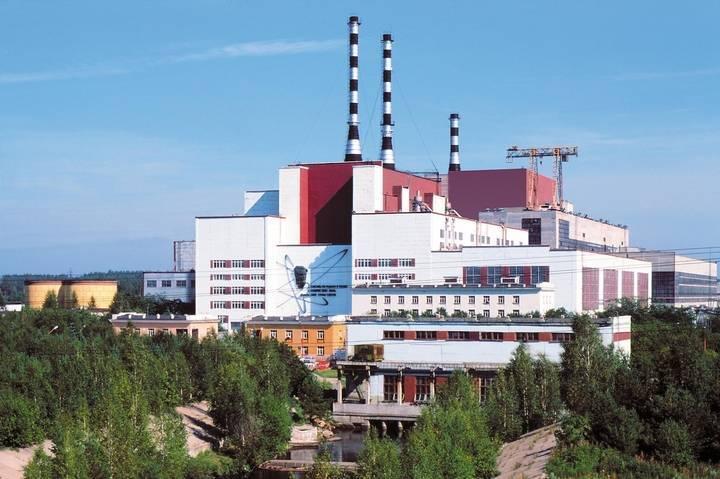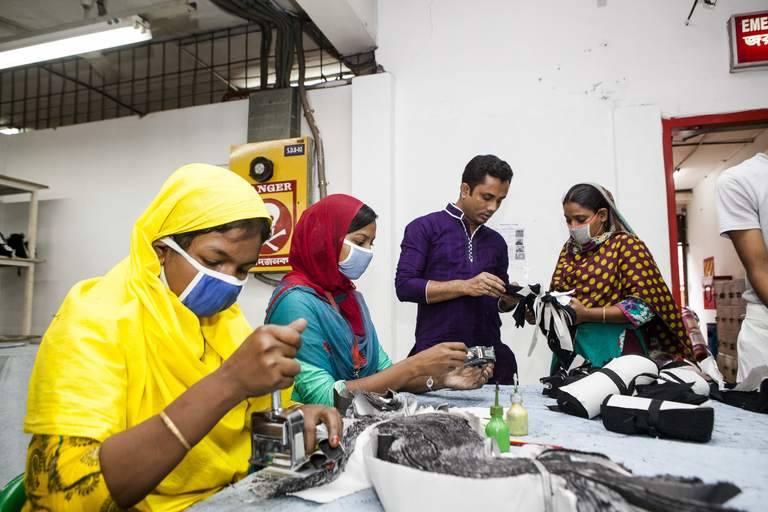Report: U.S. Meat Industry Linked to Largest Gulf Dead Zone Ever


According to a report issued this week by the NGO Mighty Earth, the U.S. meat industry is largely responsible for what has become the largest “dead zone” ever in the Gulf of Mexico. While past studies have showcased the meat and poultry sectors’ impact on both the environment and public health, Mighty’s study sheds light on the large agribusiness companies the NGO says contribute to the Gulf’s ongoing environmental degradation attributed to algae blooms.
The companies mentioned in Mighty’s report includes some of the world’s largest and well-known food companies: ADM, Bunge, Cargill, Smithfield and Tyson Foods. But rather than simply single out these corporations, the report offers suggestions on how these and other agribusiness leaders can clean up their supply chains and strengthen their trust with consumers, who have increasingly taken food companies to task over issues such as antibiotics, animal welfare and deforestation.
According to Mighty, Tyson responded to the report and the NGO shortly after its release. A Mighty representative told TriplePundit in an email exchange that the company did not offer any real commitments, but said the company is "working to determine its full environmental impact and looks forward to a collaborative partnership." Tyson also told Mighty that the company is conducting a life cycle analysis to find the largest environmental impacts in their supply chain as it recognizes that animal feed is a major part of its overall impact.
The report comes as the global beef industry insists it has become more sustainable, and other companies such as Tyson have made investments in plant-based protein companies including Beyond Meat. Despite these businesses’ moves to demonstrate their sustainability street cred, Mighty insists there is still much room for improvement.
Ed. Note: Gary Mickelson Sr. Director – External Communications
Tyson Foods, Inc. Tyson reached out to us to share a statement:
Your story "Report: U.S. Meat Industry Linked to Largest Gulf Dead Zone Ever" includes no comments from the meat industry or our company. We believe the report, and your headline, are extremely misleading. Below are our comments on the report as well as a link to a blog by the North American Meat Institute (NAMI), which notes the “report’s claims are akin to blaming the steel industry for auto emissions because a steel is used in cars.” We’re hopeful you’ll consider adding our perspective, as well as the views of NAMI, to your story.Tyson Foods Statement
We share this group’s concern about the environment but disagree with its misleading characterization of our company. Tyson Foods is not in the business of raising the crops and we own very few livestock farms. Instead, we depend on thousands of independent farmers to raise our chickens or sell us their cattle or hogs. We work closely with our partners from farm-to-fork to identify and deploy new technologies designed to better protect the environment, our workforce, and the communities we serve.The livestock and poultry industry is a major buyer of grain for feed, however, this group’s report fails to address that a large percentage of corn raised in the U.S. is used for biofuel and a significant portion is used for human consumption.
We’re committed to the environment. That’s why we publicly disclose our environmental efforts and recently announced that we’re collaborating with the World Resources Institute to develop goals for improving our environmental footprint. We also plan to announce our collaboration with other third-party organizations that will work with us to set additional science-based targets. These efforts are part of our comprehensive, holistic approach to sustainability, that is focused on healthier animals, healthier environment, healthier workforce, healthier communities, and healthier food.
Our environmental commitment also includes an environmental management system at each of our facilities designed to enable more sustainable operations, continued focus on more recycling and long-term participation in EPA’s SmartWay energy conservation program.
Tyson Foods is focused on continuous improvement. We believe real change will come from a coalition of leaders from all parts of the supply chain, research institutions and advocacy groups to create an operating approach that protects resources, supports farmers, and feeds America.
North American Meat Institute Blog
Mighty Earth’s Mighty Miss http://blog.meatinstitute.org/2017/08/mighty-earths-mighty- miss/
The foundation of the problem is Mighty’s citing of 2015 statistics that suggested the average American eats 215 pounds of red meat and poultry annually. That is a jump after years of declining meat consumption, and that figure is expected to rise in the next few years. As a result, the authors of Mighty’s report says more prairies are being converted to lands dedicated to raising grains animal feed. In turn, manure and fertilizers applied to nourish those grains eventually find themselves washed down to waterways including the Mississippi River, and eventually in the Gulf of Mexico.
And while just about every U.S. state hosts its share of meat producers and their supply chains, this industry is entrenched in the Midwest, where corn and soy thrive, allowing companies to maximize efficiencies by consolidating their operations and supply chains within America’s heartland.
As a result, Mighty estimates that 1.15 million metric tons of nitrates from fertilizers ended up in the Gulf of Mexico during 2016 alone, which resulted in an impact 170 times the size of the 2010 BP oil spill.
Those costs are often borne by taxpayers directly or indirectly. Mighty suggests that Americans spend at least $1 billion on bottled water annually due to nitrate pollution, while municipal water systems spend about $2 billion to treat water tainted by nitrate runoff. Fishing companies that traipse about the Gulf of Mexico pay, too, as in the estimated $82 million annually in lost sales and public health expenditures related to the algae blooms.
Mighty offers a 5-point strategy that it says could mitigate the meat industry’s impact on the Midwest’s environment while reducing those Gulf algae blooms. First, “pollution-free” feed is a start. By Mighty’s definition, this tactic goes beyond monitoring nitrogen and phosphorous levels. Ensuring soil health by preventing erosion and restoring “buffer” areas such as grasslands and wetlands around farms and waterways are also important steps.
In addition, the report’s authors suggest moving away from monoculture farms and encourage farmers to raise other grains such as oats, wheat and barley. The NGO claims such tactics can improve soil quality while also improving the health of livestock by providing them a more diversified diet.
Next is a buzzword that is sure to start a stink: “responsible manure management.” Instead of storing animal waste in ponds or lagoons, Mighty says it behooves companies such as Tyson to work with their supply chains and find alternative ways to reduce the environmental impact of manure (one dairy farmer in California, for example, has long used manure for renewable power via an anaerobic digester). Whether these large companies will help fund this projects for their suppliers, who often operate on thin margins, is a huge open question.
Finally, Mighty is asking companies to adopt a one-two punch to ensure their operations and supply chains are more sustainable. Companies could pledge not to source from suppliers found to cause damage to ecosystems across the U.S. prairies - similar to declarations made by firms to stop relationships with companies that have been responsible for deforestation in regions such as Latin America and Southeast Asia. Such policies tie in to the fifth and final suggestion: more transparency so that these companies’ stakeholders and their suppliers can see in real time the effects these companies are having in the areas and communities in which they operate.
Image credit: Aaron Carlson/Flick
Energy Department Scientists Barred From Attending Nuclear Power Conference


By Elliot Negin
Edwin Lyman, a physicist at the Union of Concerned Scientists, was one of 30 U.S.-based scientists scheduled to speak at the quadrennial International Atomic Energy Agency (IAEA) conference on fast breeder nuclear reactors in Yekaterinburg, Russia, in late June. Lyman did not attend the previous two conferences, in Kyoto in 2009 and Paris in 2013, and was looking forward to rubbing shoulders with hundreds of scientists from around the world, including more than two dozen from U.S. Department of Energy (DOE) national laboratories.
Shortly after he arrived, however, Lyman learned that the 27 DOE lab scientists listed in the conference program were no-shows. One session featuring a panel of four DOE lab scientists talking about code development was cancelled outright, Lyman said, while a handful of other panel discussions, originally comprised of five to six speakers, soldiered on without U.S. participation. “On the first day, the DOE attaché at the U.S. embassy in Moscow gave a 20-minute talk about the U.S. fast reactor program and refused to take questions,” he said. “That was it for the Energy Department.” Three DOE scientists did attend the conference, according to the DOE, but none of them were part of the official program.
Sandra Bogetic, a University of California, Berkeley, doctoral student who presented a research poster at the conference, also couldn’t help but notice that the DOE scientists were missing. Bogetic’s poster session was slated to include presentations by 122 scientists from 17 countries, including a dozen scientists from DOE labs. The DOE scientists were nowhere to be found, and another five DOE scientists missed a second poster session the following day.
“Everyone was in shock that they didn’t show up,” Bogetic said. “It’s the most important conference for fast reactors, and it was a lost opportunity for U.S. scientists to share their work at a conference that takes place only every four years.”
Mum’s the Word
Scientists planning to speak or present posters at the IAEA conference were asked to hand in their papers to conference organizers last December, five months before the event. The deadline was then extended into January, and at that point, the 27 DOE lab scientists were all on board to participate.
In early April, however, the DOE scientists received an email from Sal Golub, associate deputy assistant secretary for nuclear technology research and development at the DOE, indirectly telling them that the agency was not going to let them go.
“Yesterday,” Golub wrote, “we informally notified the IAEA conference organizers of the following: Representatives from the Department of Energy’s Office of Nuclear Energy and DOE/NE contractors at the National Labs are currently unable to travel to Russia, which means they will not be able to attend the IAEA’s Fast Reactor conference in June.” He also assured the scientists that the DOE was “working with the organizers to adjust the program to reflect our absence,” which obviously didn’t happen.
Golub gave no reason why DOE scientists were “unable” to travel to Russia, and, when I asked him for an explanation, he referred me to the DOE public relations office. Spokespeople at department headquarters in Washington, D.C., and the Argonne National Laboratory in Illinois — where 15 of the 27 missing DOE scientists are based — were equally unhelpful.
A DOE spokesperson in Washington, who declined to be identified, responded in an email: “We greatly value cooperation with the IAEA and plan to continue to do so whenever we can. The Department of Energy and the [U.S.] Embassy were represented at the event.”
Christopher Kramer, Argonne’s media relations manager, also avoided answering my question. “I can tell you that Argonne greatly values its relationship with the IAEA and plans to continue cooperation whenever we can,” he said in an email. “... From what I understand, Argonne did have two people in attendance at the conference in question.”
I emailed both PR officers back and again asked why the scientists weren’t at the conference. No response.
Finally, I called a random sample of the grounded scientists. It was another dead end.
“I wasn’t able to attend,” one said tersely. “I won’t talk about it.” Click. “We were told not to deal with outside media or organizations,” said another. Click. Two others were slightly more talkative, but neither could clear up the mystery. “I know very little about the decision” to cancel the trip, said one of the scheduled panelists. “It was above my pay grade. I basically followed orders from management.” The other scientist, a would-be poster session participant, was clearly perturbed. “The only reason I know is the [DOE] Office of Nuclear Energy wouldn’t let people go,” he said. “They didn’t give us a reason. I don’t know what their rationale is. Other U.S. government agencies are sending their people to Russia.”
Trump’s War on Science or a New Cold War?
So what’s the story behind the case of the missing DOE scientists?
It could come down to money. It’s certainly no secret that the Trump administration wants to slash DOE science spending. Just last month, for instance, the department closed its Office of International Climate and Technology, eliminating 11 staff positions. The office, which was established in 2010, provided technical advice to other countries on ways to reduce carbon emissions. The administration’s proposed federal budget, meanwhile, would cut the annual budget of the DOE Office of Science — the nation’s largest funder of the physical sciences — by 17 percent to $4.47 billion, its lowest level since 2008, not adjusting for inflation. Outlays for nuclear energy research would drop 28 percent. Even more drastic, the budget for the department’s Office of Energy Efficiency and Renewable Energy would plunge nearly 70 percent.
DOE spokespeople, however, didn’t cite financial constraints as a reason, and the cost of sending the scientists to Russia was presumably built into the fiscal year 2017 budget, which predated the Trump administration. In any case, Bogetic, the Berkeley grad student, told me that one of the scientists who wasn’t allowed to attend the conference asked the DOE if he could pay his own way. The answer was no.
It’s also tempting to chalk it up to the Trump administration’s war on science. Besides barring federal scientists from attending conferences, according to a new report by the Union of Concerned Scientists (UCS), the administration also has been preventing scientists from speaking publicly, dismissing key scientific advisors, denying public access to taxpayer-funded information, and ignoring scientific evidence to justify rolling back public health, environmental and workplace safeguards. No doubt, the administration’s hostility toward federal scientists may have been a factor.
The most likely explanation, however, is where the conference took place — Russia — and what it was about — nuclear energy.
U.S.-Russian relations, notwithstanding President Trump’s bromance with Russian President Vladimir Putin, have been deteriorating for quite some time. The White House is under investigation for possibly colluding with Moscow to undermine Hillary Clinton’s presidential campaign, and Congress just passed tougher sanctions on Russia for meddling in the 2016 U.S. election, annexing Crimea, and supporting eastern Ukraine separatists.
Nuclear-related relations between the United States and Russia are also frayed. Last October, in response to U.S. sanctions, Putin suspended a U.S.-Russian agreement to dispose of excess weapons grade plutonium; an agreement to cooperate with the United States on nuclear energy-related research; and a pact between the DOE and Rosatom — the Russian state atomic energy corporation — to conduct feasibility studies on converting six Russian research reactors to safer, low-enriched uranium.
Putin’s actions didn’t get much media attention, but they should have. Writing in the Bulletin of Atomic Scientists last December, Siegfried Hecker, former director of the DOE’s Los Alamos National Laboratory, warned that “the Kremlin’s systematic termination of nuclear cooperation with the United States … sets the clock back, putting both countries at enormous risk and endangering global stability.”
Rosatom was the co-host of the June IAEA conference, which was held in Yekaterinburg mainly because the world’s largest operating fast reactor is only 35 miles away, at the Beloyarsk nuclear power plant. Conference participants were treated to a tour of the 880-megawatt BN-800 reactor, which began generating power last year, as well as its smaller predecessor, the BN-600, which has been running since 1980. There are only four other fast reactors currently in operation worldwide: one in China, two in India, and another one in Russia.
The IAEA conference, however, was not Russo-centric. Scientists from more than two dozen countries, including China, France, Germany, India, Japan, South Korea and Sweden, participated. And despite Russia’s suspension of nuclear cooperation with the United States, U.S. scientists were welcome.
“Scientists shouldn’t be limited by political problems,” said Bogetic. “We are scientists. We need to communicate.”
Lyman, the UCS physicist who participated in a panel discussion at the conference, agrees. “With so many communication channels between the U.S. and Russia now cut off, it’s essential to preserve scientific cooperation in areas where there is common ground between the two countries,” he said. “Preventing DOE scientists from attending the IAEA conference — for whatever reason — was shortsighted and ultimately self-defeating.”
Elliott Negin is a senior writer at the Union of Concerned Scientists.
Benefit Corp. DanoneWave Has a Special Pledge for Dairy Farmers


DanoneWave, the outcome of Danone’s $12.5 billion acquisition of WhiteWave Foods earlier this year, is now the largest public benefit corporation in the U.S. In addition to its commitment to reduce the number of ingredients in its products, boost water conservation efforts, reduce waste and improve animal welfare, the company now says it wants to build a more sustainable supply chain.
To that end, DanoneWave has accelerated what it describes as a “pledge” to improve the financial and environmental performance of dairy farmers, who are crucial to the success of the company’s products such as yogurt. As a start, DanoneWave says it wants to strengthen its relationship with farmers at the beginning of the milk production cycle, instead of merely purchasing the ingredient the moment before it becomes yogurt at one of its factories.
Farmers who accept DanoneWave’s pledge enter what the company describes as a “special club.” The quid pro quo involves dairy farm operators opening their books and agreeing to launch new practices across their operations. In return, the company will agree to pay for costs involved in ensuring these dairy farms become more sustainable, including fees for Validus dairy farm certifications as well as other programs. DanoneWave says that currently 90 percent of the milk used to make the company's products is sourced from Validus-certified farms.
DanoneWave would not reveal too many specifics about this program, but said the overarching goal is to improve these farms’ profitability while helping their operations become more sustainable. “While we cannot share all the details of the private relationships,” explained a company representative by email, ”We can tell you that the concept is to provide the producers with an agreed-to margin.”
Dairy farmers overall have long been subjected to thin margins; one estimate suggests that a gallon of milk on averages nets the farmer less than $1.50 - and then they have to account for the costs related to tending their animals while staying compliant with a bevy of regulations. Profits can often end up being as low as a few cents per gallon of milk. But according to DanoneWave, the appeal of its program is that dairy farmers will receive a fixed price and stable buyer for their ingredient. But in return, they must be open to employing sustainable farming techniques such as no-till and the planting of cover crops. DanoneWave says such moves are necessary, as the company has been hearing increased feedback from customers who say they want their products to be more responsible, more healthful and more sustainable.
DanoneWave’s representatives also told TriplePundit that dairy farmers would score the satisfaction of knowing in which products their milk winds up. After all, the company insists more consumers are also concerned about their foods’ traceability. While this is often true of foods such as coffee and chocolate, 3p asked Danone if this actually applied to dairy products. “The increase in interest to know where food comes is not specific to dairy,” explained the DanoneWave representative, ”this is a trend we are observing across categories of food."
The company pointed to recent studies suggesting that at a higher level, traceability should now be more of a concern for food companies. Whether more yogurt cups in the future will sport a disclaimer saying “this yogurt is made from milk in this zip code” will become an industry norm anytime soon is an open question.
It’s important to note that while DanoneWave is working with farmers to become more sustainable, that does not necessarily mean participating farmers will go organic despite these products’ enduring popularity. And that may very well be a smart decision by the company, as organic certification has sometimes proven to be a slippery slope, as portrayed by a Washington Post investigation earlier this year. While the company owns a couple organic brands (Horizon and Wallaby), dairy farmers who seek organic certification will have to look elsewhere for assistance. “The non-organic dairy farmers that we are currently working with for Dannon yogurt products have not expressed interested in going organic,” explained a DanoneWave spokesperson. “It's an individual decision whether to pursue organic certification.”
Image credit: Randen Pederson/Flickr
How to Tell Better Stories on Camera


By Dave Armon
For corporate responsibility professionals who want to show the positive impact of their work, video is often the medium of choice.
But hold off on powdering your CEO’s nose and firing up the teleprompter.
Authenticity suffers when those appearing on camera look like they’ve just completed Media Training 101, says Vern Oakley, a veteran filmmaker who founded Tribe Pictures in 1986. Oakley will lead a session aimed at helping CSR and sustainability pros tell better stories using video during COMMIT!Forum, Oct. 11-12.
“While media training prepares you for some specific situations, it can suck all the authenticity out of you and leave nothing but a corporate taking head,” warns Oakley in his new book, Leadership in Focus. “It teaches people to pivot, to avoid, to squirm, and to dodge. Media training helps people go on Fox News or sit with Charlie Rose or get in a good quip at the debate, but what happens in media training is the total opposite of what it takes to be you on camera. Viewers don’t want a polished sound bite machine. They want a real human.”
Oakley, who has produced films and videos featuring hundreds of C-suite executives, has turned media training on its ear in his 244-page how-to guide for those seeking to increase the effectiveness of digital content.
Whether to employ an off-camera interview with the CEO, a roundtable discussion or a direct-to-audience approach depends on goals and the executive’s style. Oakley thoroughly explores the seemingly endless list of options while advising when circumstances favor a format.
“The roundtable is particularly effective for discussing complex issues when you want different points of video to come forward,” writes Oakley. “You may not want one person to be the total focus because someone one in the group may contribute interesting and less familiar points of video with the audience.”
He offers warm reviews of leaders like Spanx CEO Sara Blakely and Microsoft chief Satya Nadella while dedicating a full chapter to techniques that camera-shy execs can use to prepare.
Reviews have been uniformly positive for Oakley’s book, which led in sales in the filmmaking category following its release earlier this year.
“Every business major takes a writing course, but that’s not our future. Instead, everyone with something to say is going to need to say it on camera. And Vern Oakley’s crash course is a great place to start,” writes digital marketing author and entrepreneur Seth Godin about Leadership in Focus.
Join Oakley at Commit!Forum, at the MGM National Harbor, just outside Washington on Oct. 11-12. Register here.
Can the power grid handle the increased demand from electric cars?


Britain joins the green wave in swearing off combustion engines


Three Social Entrepreneurs Solving a Few of India’s Challenges


by Sangeeta Waldron
Social entrepreneurs are the heroes at grassroots creating change and making impact. The India Social Entrepreneur of the Year Award (SEOY), a joint initiative with the Jubilant Bhartia Foundation and Schwab Foundation for Social Entrepreneurship, sister organisation of the World Economic Forum, recognises successful social entrepreneurs who have found practical and sustainable solutions to challenges in health, education and the environment. I spoke to three of them, who have been winners or shortlisted for the awards. They are: Waterlife, finalist SEOY 2011; Goonj, SEOY winner 2012; and Daily Dump, SEOY winner 2015.
Waterlife – Founders Sudesh Menon, Mohan Ranbaore and Indranil Das. Waterlife ensures safe and clean drinking water for communities in areas with high water contamination. It’s estimated that 65% of India’s rural population and 35% of those living in urban areas do not have access to clean drinking water. I spoke to Sudesh Menon:
MIT research predicts that by 2050 more than half the world’s population will live in water-stressed areas and about a billion or more will not have sufficient water resources. What do you predict for India?
SM: In India, the scenario looks even worse – according to NASA’s satellite images, the river Ganges has the highest water depletion rate globally. Sadly, over extraction and populist policies like free power and inefficient irrigation practices have aggravated the problem. India is already a water stressed country and it’s predicted that by 2030, there will be a 50% gap between demand for water and the availability of fresh water because of droughts in various parts of the country.
India is the only country in the world with mandated CSR regulation, making it a requirement for all companies, including foreign firms, to spend at least 2% of their profit on CSR. Has Waterlife benefitted from this?
SM: Yes, we have seen responsible companies coming forward to do CSR projects, many of them to provide safe water to villages and areas around their factories. Many large and reputed companies understand the need for safe water and the diseases and economic losses associated with unsafe or contaminated water such as infant mortality. Safe water is at the confluence of all human activities. The lack of it not only causes diseases and economic loss, but is a huge loss to the national exchequer. It’s good to see many companies coming forward to solve this problem and create impact.
Goonj – Founder Anshu Gupta. Goonj collects, sorts, repurposes and redistributes cloth to the rural and urban poor. It works with village and slum communities to meet their needs of clothing and other necessities.
India always has had a culture of recycling through its traditional ‘raddi-wallah’s’ – was Goonj an easier social concept to get across to urban and rural communities?
AG: The culture of recycling has been here for generations, yet the giving of surplus cloth and other materials has always been about discarding/donating what you have rather than giving what people need. Goonj has successfully changed this thinking and have made recycling large scale, dealing with more than 3000 tons of urban material annually.
We have also repositioned urban surplus material from the old concept of charity to a powerful development resource. The material empowers rural communities through collective participation; our work has not only become a big people’s movement, but is also creating a parallel economy where old re-usable material becomes a valuable resource. It’s not cash based but trash based.
Tell us about Goonj’s sanitary napkins programme and the impact it is making on women and girls in rural India?
AG: Goonj’s initiative NJPC (Not Just a Piece of cloth) is much more than a sanitary napkins programme. It looks at the whole issue of menstrual hygiene management for millions of women in the most far flung villages or city slums. Women make-up 72% of India’s rural population, yet are forgotten. They face challenges every month when their periods arrive – access to affordable sanitary towels and awareness.
In 2005 we found tons of abandoned cloth in aftermath of the Tsunami in Tamil Nadu, so we took up the task of turning more than 100 trucks of this material into much needed cloth pads. Now, more than a decade later, ‘MY Pads’ reach women across the country, where they are probably the cheapest, reusable, easy to make and eco-friendly sanitary pads. Women now have a clean piece of cloth, which saves them from infections and indignity.\
Daily Dump – Founder Poonam Bir Kasturi calls herself ‘compostwali.’ Daily Dump manages India’s urban home waste right where it is generated – within the family home by cleverly fusing design, traditional pottery with the science of composting to develop more than 50 aesthetic products and services, enabling urban Indians to compost their waste and be part of the solution to the country’s huge trash problem.
What challenges have you faced as a female social entrepreneur in India? And how have you overcome them?
PBK: The biggest challenge is to convince people that I mean business. They only associate women being involved in charity/not-for-profits work in this space for some reason and surprised that we are an enterprise. Often, I just get on with the job and wait for the change in attitude with the work we do.
What advice would you give any female social entrepreneurs thinking of starting out in India?
PBK: There is much to do in India - so no advice. Do what you believe in and don't follow the crowd!
Photo Credits: Jubilant Bhartia Foundation and Daily Dump
Bangladesh Claims Global Leadership in Garment Transparency


According to a coalition of trade industry groups, NGOs and academics, Bangladesh will soon have the world’s most transparent garment industry. Over the weekend, Dhaka-based BRAC University’s Center for Entrepreneurship Development (CED) expanded on this point with its announcement of a mapping tool that will include factory names and locations, the numbers of workers, export countries, certifications and fashion brand customers.
This online tool, DRFM-B, builds upon BRAC’s efforts to map as many of Bangladesh’s garment factories as possible. When TriplePundit spoke with a BRAC professor last year, the university had started a pilot project that covered 450 factories in the greater Dhaka region. That pilot proved to be widely successful and popular. Now the mapping tool aims to be much more comprehensive, as verification will be crowdsourced from the public to ensure that all data remains as updated and accurate as possible.
Supporters of this digital mapping project include the large national trade groups, with much of the funding provided by the C&A Foundation. DRFM-B’s progress will be monitored by a multi-stakeholder advisory committee, which includes representatives of labor groups, NGOs, employers, and trade associations.
In a public statement, the C&A Foundation said the tool will launch online in mid-2018, with the mapping of all 20 garment districts in Bangladesh to be included by 2021. As a result, the stakeholders involved in the development of this tool say it will make Bangladesh’s apparel sector the most transparent one on the planet.
Bangladesh’s apparel industry has grown at a voracious rate since its origins 30 years ago, and has since become one of the country’s most important cash generators with an estimated value approaching $30 billion annually. The sector’s growth has resulted in more jobs while boosting the country’s exports, but it has also festered a bevy of social and environmental problems. Accusations of child labor have long rocked the country’s apparel sector, and complaints about worker safety were endemic across many factories.
Never mind emerging competition from upstart economies in Africa, as well as the strength of apparel sectors in mainstays such as China, Vietnam and India. The sector can forget about its goals to become a $50 billion juggernaut if brands and consumers become more repelled by any perception that Bangladesh is prioritizing export statistics over workers’ rights.
The Rana Plaza factory collapse four years ago symbolized everything that had gone wrong with this industry and how its factories too frequently treated employees. Many companies pledged to clean up their supply chains after what happened at Rana Plaza; others delayed making any changes until the public outcry became too loud to ignore.
The DRFM-B mapping tool builds upon promises by more companies to increase the sector’s transparency and traceability. The UK retailer Marks & Spencer is one example of a company that allowed stakeholders to view online the factories from which it sourced garments. After criticism and accusations that some of Bangladeshi workers endured 100-hour weeks to sew and stitch its branded garments, Gap Inc. announced last year it would publicly disclose its suppliers within the country. Earlier this year, H&M said it would instruct manufacturers within its supply chain to pay their employees via digital technology instead of dispersing their salaries in cash.
Nevertheless, the Bangladeshi garment sector is still plagued by several problems. Observers pointed to a blast last month in an apparel factory outside of Dhaka, which killed 10 people and injured dozens more. But worker safety goes beyond factory inspections and compliance measures. As a report issued two weeks ago by the Global Fund for Women outlines, gender-based violence is rampant across within the industry, and two-thirds of the workforce is staffed by women. More transparency about all working conditions is about more than ensuring physical safety - the sector also has a long road ahead to prove that at a minimum, employment at a Bangladeshi garment factory can be tolerable.
Image credit: C&A Foundation
Sea Level Rise Creating ‘Ghost Forests,’ New Wetlands Along Eastern Seaboard


Sea level rise has long been an enduring risk on America’s shores, particularly along the East Coast. The obvious threats are to the real estate markets along the Atlantic shore, particularly in Florida.
But now there is mounting evidence that sea level rise is creating what researchers often call “ghost forests.” As Wayne Perry of the Associated Press recently highlighted in a recent report, sea level rise is forcing salt water into more water tables, killing coastal trees from Canada down through the mid-Atlantic and Florida before these effects continue to wrap around the Gulf of Mexico coast and then westward to Texas.
The results include increasing nitrogen runoff, in turn contributing to algae blooms that kill fish and other marine life. The continued loss of these coastal forests could also threaten farms as well as the forests that are integral to U.S. paper company supply chains.
The geographical characteristics of the mid-Atlantic and southern U.S., which are noted by their low elevation and gentle slopes, make much of the Eastern Seaboard’s coastal forests susceptible to sea level rise over the next few decades. Academic research has suggested that high tides have increased several inches over the past decade, a rate three times faster than average across the rest of the world.
While Perry and other journalists deserve credit for shining light on how these ghost forests can wreak havoc on ecosystems, this trend has been decades, even centuries, in the making. As anyone stuck in a traffic jam along I-95 can attest, the East Coast’s dense population and continued development has created a perfect storm. One researcher, Matt Kirwan of the Virginia Institute of Marine Science, has long been ahead of the curve in understanding what is behind this growth in ghost forests and what their future impacts could become. The nutrients used in farming, changes in sediment patterns and rates in land subsidence all have contributed to the declining health of coastal forests. Storms and flooding then add even more damage to these fragile environments.
On the plus side, many wetlands across this region have proven to be not only resilient, but have even thrived. And some changes in the East Coast’s climate have been a net positive, depending on one’s perspective. For anglers, the arrival of the Atlantic Croaker, a rare fish along New Jersey’s shores only a decade ago, has been a benefit. The flip side to that argument has been that other local fish have declined in numbers as they seek colder waters farther north.
For Kirwin and other scientists, the Goodwin Islands in Virginia’s Hampton Roads region has been the laboratory for observing the various changes as coastal forests become wetlands. Old maps and soil testing has shown that during the 1850s, these islands in the Chesapeake Bay estuary had twice as much forest than they currently host. Trees have suffered as invasive species have taken root; but researchers who visit to study this undeveloped area says this cluster of islands could hold clues for what is store for the East Coat’s shores later this century.
This work may be too late for some ecosystems, however. The Atlantic white cedar, for example, once covered 115,000 acres across New Jersey. Now there are only about 30,000 acres left home to these trees, which can live up to 300 years. These forests’ loss is just one casualty the Garden State has suffered due to coastal storms and flooding, along with the approximate $1 billion losses due to property and farm damage well before Hurricane Sandy hit in 2012.
Image credit: Leon Kaye
Since 1970, Air Pollution Down 73%, Economy Tripled


The U.S. Environmental Protection Agency (EPA) may have taken a drastic change of direction under Scott Pruitt, but plenty of the agency’s staff is still devoted to facts and science. In fact, the EPA’s latest annual air quality report shows that environmental regulation and business growth are not mutually exclusive. The report also provides a case study for long-term sustainable development, as yes, growth and clean air can occur hand-in-hand.
After all, in the almost five decades since Richard Nixon established the EPA, as a nation we are collectively driving more, leaving the lights on more frequently, and flick our home and office switches on more often. But despite almost a 60 percent increase in population since 1970, the nation’s air is cleaner, and the ways in which we light our rooms and power our automobiles have become far more efficient.
Some of the most impressive statistics have emerged since 1990, when the first President Bush and a Democratic-dominated Congress revamped the Clean Air Act. Since 1990, carbon monoxide levels are down 77 percent, lead concentrations in our air have cratered 99 percent and nitrogen dioxide pollutants have fallen by at least half. Various forms of particulate matter have decreased by about 40 percent overall the past 27 years, and cleaner transportation fuels have helped sulfur dioxide emissions to collapse by 85 percent.
But when one looks at the EPA’s entire history, the overall improvement in our air quality is even more impressive. Some of the differences can be seen with our eyes – ask your parents and grandparents if they remember visiting Los Angeles in the 1950s and 1960s and seeing that brown haze blanket California’s largest city. Some of us are old enough to remember “smog alerts,” which meant staying inside the classroom instead of cavorting around the playground.
But as two American presidents, John Adams in the 18th century, and Ronald Reagan over 200 years later said, “facts are stubborn things.” And that statement is true when it comes to discussing the EPA’s role in reducing pollution while the U.S. economy, despite some fits and starts, underwent steady growth during the late 20th and early 21st century.
The combined emissions of six common air pollutants, which include particulate matter, sulfur dioxide, nitrogen oxide, volatile organic compounds (VOCs), carbon monoxide and lead, have fallen 73 percent since 1970. Over the same time period, the U.S. economy has grown over three and half times in size, the total number of miles Americans have driven almost tripled and energy consumption has increased 44 percent. Those differences have been seen across the U.S., from large cities to the country’s national parks.
Meanwhile, air quality continues to improve even this century. In 2000, the number of “unhealthy air quality days” was over 2,000 days, and it increased slightly the following year. By 2010, that number had almost halved. Last year, the number of those days totaled just under 700.
Critics of legislation such as the Clean Air Act, including the current president, have been quick to say that such laws have been a drag on the U.S. economy. But the data shows that just is not true. In fact, some of the EPA’s programs have been market-friendly, such as the Acid Rain Program that launched in 1990 due to the sulfur dioxide and nitrogen oxide levels that were polluting much of the northeastern U.S. and Great Lakes region. That allowance trade system reduced emissions and improved public health while pushing companies to become far more efficient in their operations.
The fight is far from over. Pruitt and the Trump White House have been determined to unravel much of the progress made during the Nixon, George H. W. Bush and Obama administrations, despite the evidence that the EPA’s rules have improved public health and the environment nationwide without punishing the economy. State officials are pushing back, however. This week, 16 attorneys general are suing Pruitt’s EPA for blocking any implementation of the EPA’s smog rules, despite their health and safety benefits.
Image credit: Todd Jones/Flickr